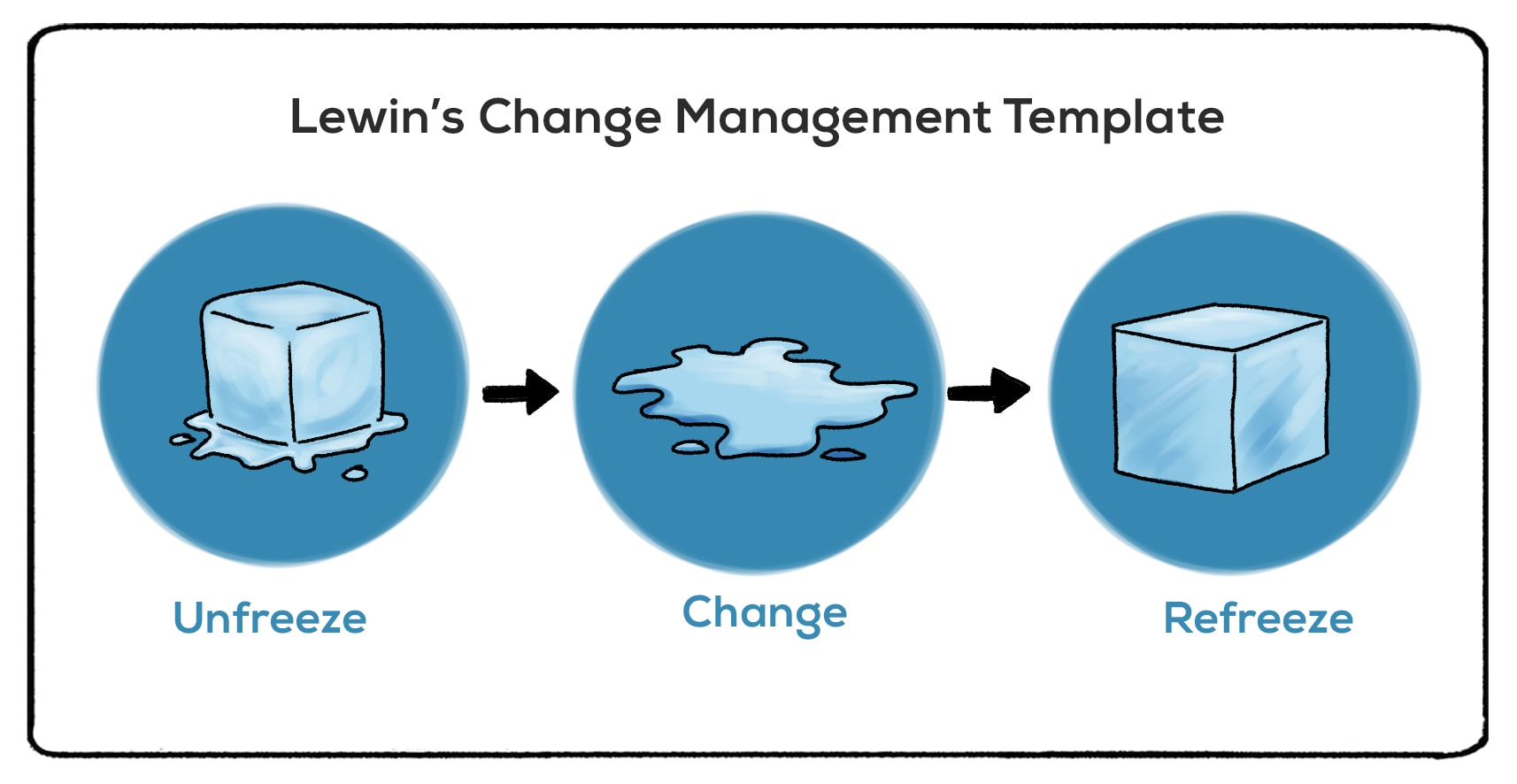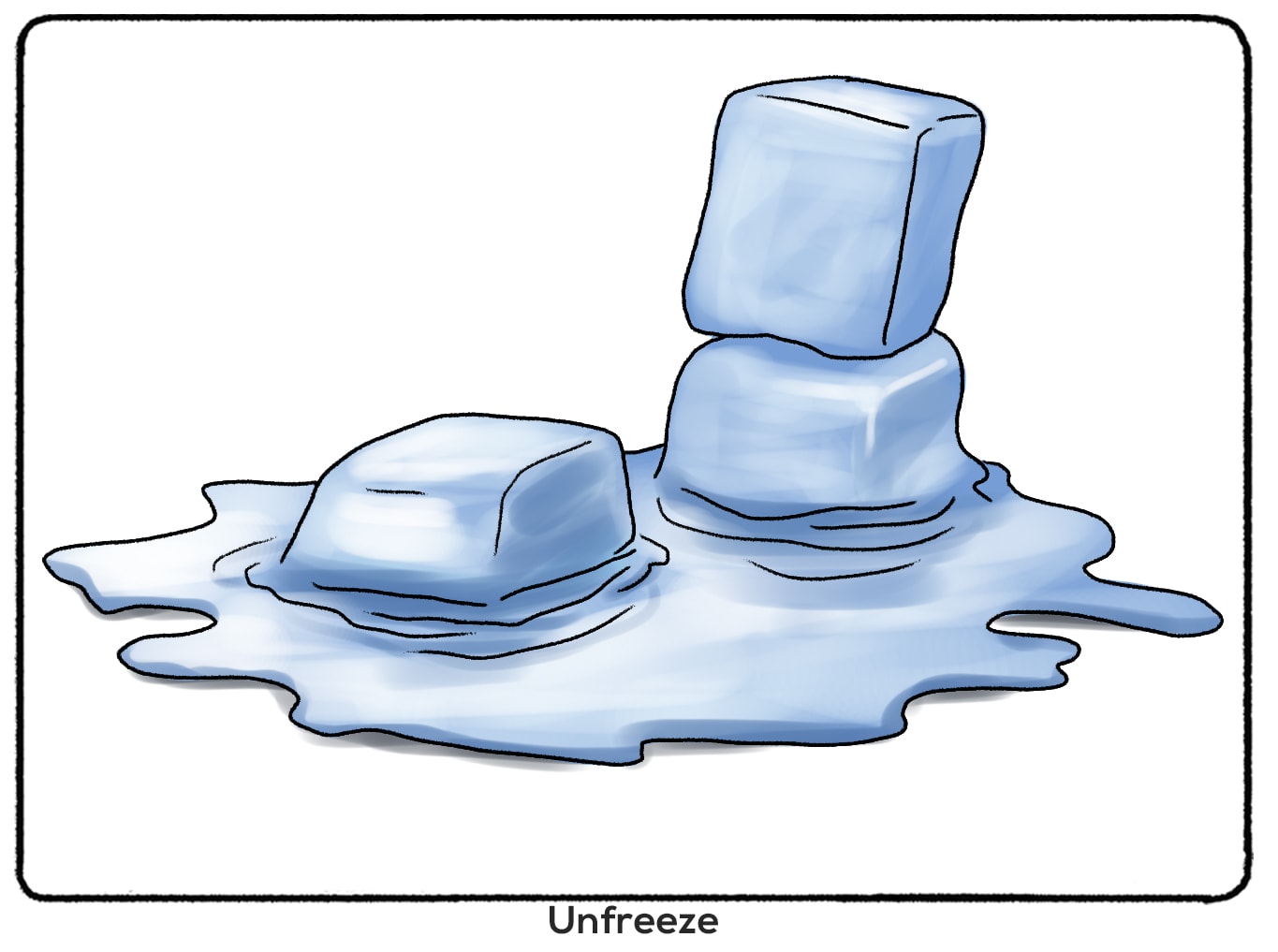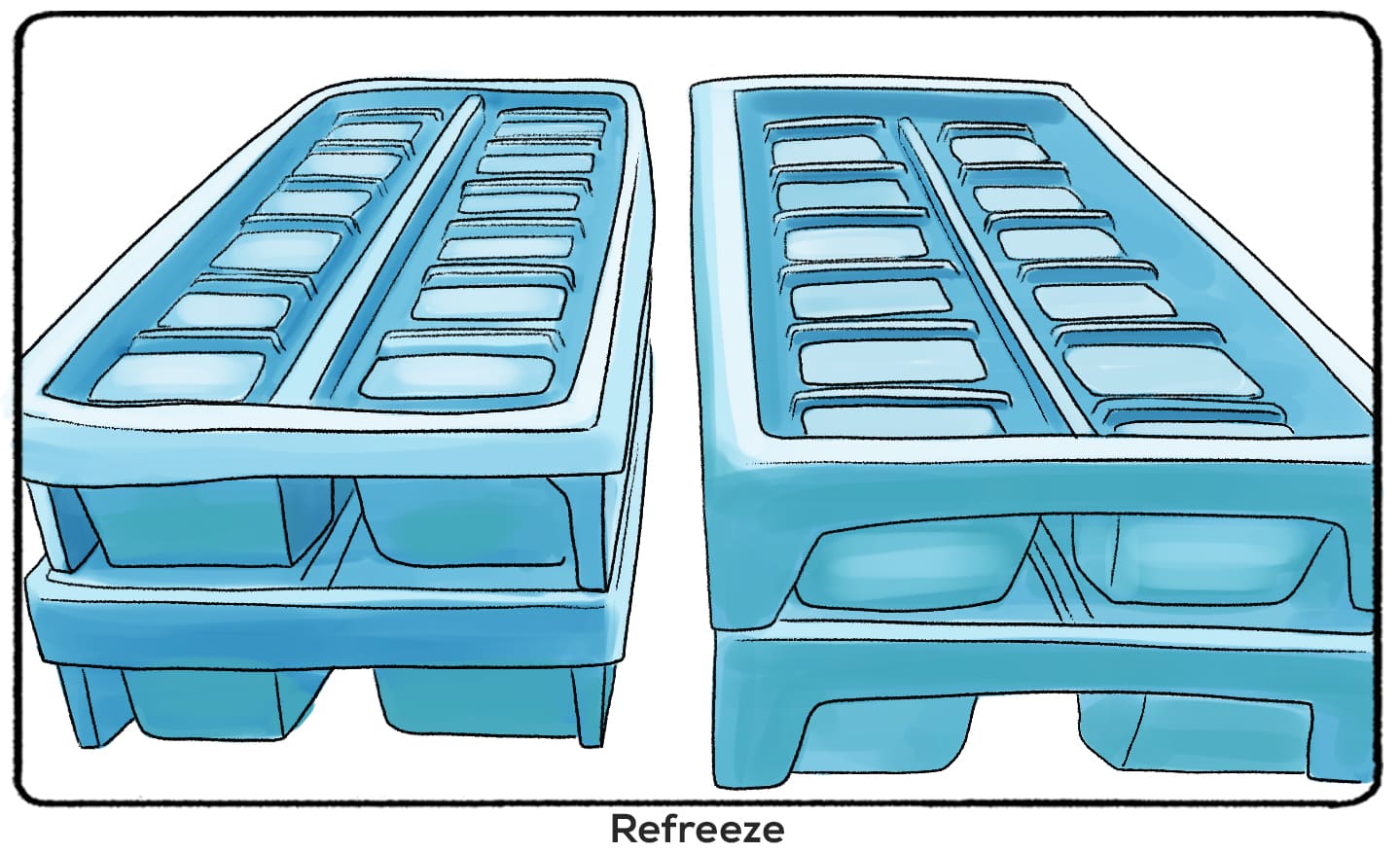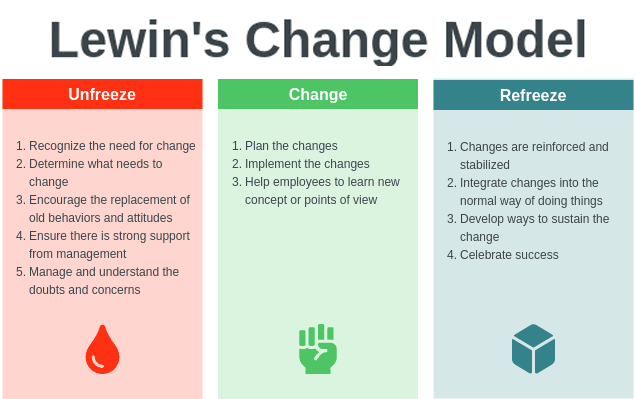It seems like every school in psychology has some sort of “father.” Freud is considered the father of psychoanalysis. John B. Watson is considered the father of behaviorism. If you’ve watched any of my previous videos on Kurt Lewin, you may know that he is considered the father of social psychology. Lewin's Change Theory is central to his legacy in the world of psychology.
What Is Lewin's Change Theory?
Lewin’s Change Theory looks at the way that we behave and change in organizations. In this theory, Kurt Lewin shares a specific model of change called the Unfreeze-Change-Freeze model. Lewin's Change Theory is one of the social psychologist's most important contributions to the field.
About Kurt Lewin
Kurt Lewin was a German-born psychologist who pioneered research in group dynamics and other facets of social psychology. In fact, he coined the term “group dynamics” that we use today to discuss interpersonal relationships. Although he was born in Germany, most of his notable work was done in American institutions, including the University of Iowa and MIT. At MIT, he set up the Research Center for Group Dynamics, the first institute of its kind.
Lewin’s work with group dynamics set the stage for the development of Change Theory, but let’s go back even further. For many decades before Lewin, psychologists were trying to organize ideas within psychology by their parts. Then, Gestalt psychology came around. Gestalt psychologists wanted to look at the whole as well as the sum of its parts. This approach not only influenced theories in psychology but also perception and even design. Kurt Lewin was greatly influenced by the Gestalt psychologists.
What does this say about his work? Well, it certainly ties to the study of groups rather than individuals. His field theory, for example, suggests that behavior is the result, not just of the individual’s mental health, but also in how they interact with their environment. Everyone and everything plays a role.
The same idea applies to change. Lewin’s Change Theory can be used by individuals, but primarily focuses on change within groups. A manager may apply Lewin’s change theory to encourage her team to switch to a new way of selling products. A soccer coach may apply the theory to change their team’s training schedule. As you’ll read, commentary on change theory includes insights on how the team as a whole is feeling when change is brought to them, not when they decide to change as an individual.
Other subjects that Kurt Lewin explored alongside change theory include:
- Force field analysis
- Leadership
- Action research

What Are Driving and Restraining Forces?
Driving and restraining forces are building blocks in Lewin's Change Theory. Lewin believed that all behavior was a dynamic balance of forces that moved in one of two directions. Driving forces drove people toward change. Resisting forces prevented them from making the change.
If driving forces were stronger than resisting forces, change could occur. If both driving and resisting forces were equal, behavior stood at an equilibrium. Change does not occur here either.
In order to change behavior, you had to address driving and restraining forces.
Unfreeze, Change, Refreeze Model
Lewin proposed a model for implementing long-lasting change. In order to understand this model, you’ll need to think of a block of ice.
Let’s say that you have a big cube of ice. You want to change the ice into a big cone of ice. How do you do so without changing the amount of ice that you have?
One way to do so is to unfreeze, change, and refreeze the ice. Once the ice has melted into water, you can transfer it to a mold that looks like a cone, and refreeze it into its new shape.
Why This Model Is Still Used Today
When this model is applied to an organization (a business, charity, educational institution, etc.) you probably won’t have to worry about anyone freezing or melting. But similarly, you have to “melt” the entire structure to its core before implementing changes and setting the organization up for a new structure.
This is why the model is still in use today. By analyzing the thoughts, feelings, and values that are behind current practices, you can implement change in a positive way. Upper management may have to direct the organization’s thoughts and share thoughts, feelings, and values that enforce the change. But once this is done, everyone will be on board and each person will be more likely to gravitate toward change.
Let’s go through each of the three steps in Lewin’s Change Model.
Unfreeze

Lewin believed that you could approach the unfreezing process through one of three ways:
- Ramp up driving forces that drive behavior toward the intended change
- Slow down the resisting forces that are encouraging people to cling to the status quo
- Use a combination of both to move the equilibrium toward change
Before you choose a path to take, you will need to evaluate the situation at hand. Understanding driving and restraining forces requires an understanding of an organization’s core values and beliefs. In some cases, the organization must go through a process of unlearning.
This unlearning goes deep. After all, the decisions that have been made up to this point rest on the core beliefs and values of the organization. What values are supporting the old method? How did they contribute to harmful or outdated practices and the state that you are in today?
People at the highest levels of an organization must understand what needs to be “unfrozen” before the true unfreezing can happen. Once a set plan is in place, communication must happen. Everyone throughout the organization must be on the same page about why a change needs to be made and what beliefs, values, or processes must be replaced.
There will likely be pushback to change, which is why upper management must have a solid plan and motivation for change. A thorough understanding of both the driving and restraining forces within the organization will also help management prepare for any pushback and to plan for ways to increase driving forces toward change.
Change
The change process will adjust an organization’s:
- Behavior
- Thoughts
- Feelings
- Routine
- Habits
Once a clear plan is in place, it must be communicated and the change must start rolling out. This change must be swift. Think about jumping in a pool of cold water. You have to dive in and the adjustment will be painless. Walking into the pool slowly will be a painful (and much longer) process.
Everyone must make that dive in order for the whole organization to change and adjust. This means that upper management should not only communicate the benefits of change to the organization, but they should also involve each and every member in the change process. Everyone should be able to communicate the why and how behind change.
Refreeze

Last but not least is the refreeze stage. This stage is crucial for determining how long the change lasts throughout the organization. If you are looking for a permanent change, you will have to put practices in place that cement the changes into the minds and behaviors of the organization.
This could involve changing handbooks, contracts, or training materials so future members of the organization move forward with the changes. Maybe you focus on the members you have. It might be time to pull from our Behaviorist friends. Positive reinforcement of change can help it stick.
Example of Lewin's Theory of Change
Let’s say you want to encourage your team to show up to team-building events. There are many ways to go about this change: providing incentives, mandating team-building events, or setting up campaigns that encourage team bonding. But we can look at this example through the lens of Lewin’s Theory of Change.
In the “unfreeze” phase, you may ramp up driving forces by evaluating both your core values and when your team-building events are taking place. If your team tends to consist of parents who value spending time with family, they’re not going to want to skip dinnertime for team building. Considering everyone’s schedule (or sending out a survey asking for the best time to have events) may be a great first step to making this change.
Then we get to the “change” phase. You have to communicate with your team that this survey was sent out so that team-building events could be easier to attend. Speak to your core values; how will team cohesion and bonding help you reach your goals and speak to who you are as a company? How will these events benefit all of the people who you want to attend?
Last is the “refreeze” phase. When your team members show up to the event, reward them! Share photos of how much fun you are having and make a point to schedule the next few events immediately so members are excited and make time in their schedule. Team building will become a more permanent part of your organization!
Here are a few examples of Lewin's change theory in real life:
- Introducing a new technology system: A company decides to implement a new technology system to streamline their operations. In the unfreezing stage, the company identifies the need for change, communicates the change to the employees, and helps them understand why the change is necessary. In the changing stage, the company introduces the new technology system and trains the employees on how to use it. In the refreezing stage, the company reinforces the use of the new system, monitors its effectiveness, and provides ongoing support and training to ensure its continued success.
- Redesigning work processes: A hospital decides to redesign its work processes to improve patient outcomes. In the unfreezing stage, the hospital identifies the need for change, communicates the change to the staff, and helps them understand why the change is necessary. In the changing stage, the hospital redesigns the work processes and trains the staff on the new procedures. In the refreezing stage, the hospital reinforces the use of the new processes, monitors their effectiveness, and provides ongoing support and training to ensure their continued success.
- Restructuring a company: A company decides to restructure its operations to become more efficient. In the unfreezing stage, the company identifies the need for change, communicates the change to the employees, and helps them understand why the change is necessary. In the changing stage, the company implements the new structure and reassigns roles and responsibilities. In the refreezing stage, the company reinforces the new structure, monitors its effectiveness, and provides ongoing support and training to ensure its continued success.
Leadership and Lewin’s Change Theory
According to Kurt Lewin, there are three distinct leadership styles: autocratic, democratic, and laissez-faire leaders. Autocratic leaders make decisions mainly without consulting other members of the team. Laissez-faire leaders tend to give their team more freedom to make decisions and behave as they wish. Democratic leaders act in the “sweet spot” of the other two types of leaders. They receive input from their team before making changes or big decisions.
Lewin believed that the most productive leaders were democratic leaders. This leadership style can have very positive effects on change management. In the unfreeze portion of change, leaders have to consider the team’s motivations and what influences the way they work. This requires getting to know the team and asking for their input before big changes. Knowledge of the team is also crucial in the refreeze stage, where new behaviors must be reinforced. Leaders are unlikely to move through these stages successfully unless they understand their team members and what makes them tick.
How to Apply Lewin's Theory of Change

This model cannot be completed overnight. It probably cannot be completed in three nights either. In order to make a sweeping change throughout an organization, you need planning, communication, and consistency. Taking shortcuts or neglecting any of these elements will prevent people from understanding why the change must be made, how to do it, and that the change is permanent.
Here is a quick list of how to apply Lewin's theory of change:
- Identify the need for change and establish a sense of urgency.
- Create a coalition of key stakeholders to support the change effort.
- Communicate the need for change and establish a shared vision for the future.
- Empower employees to take ownership of the change effort.
- Provide the necessary training and resources to support the change effort.
- Implement the changes in a phased and deliberate manner.
- Monitor the effectiveness of the changes and make adjustments as needed.
- Reinforce the changes through ongoing communication, training, and recognition of success.
- Embed the changes into the culture of the organization to ensure their long-term sustainability.
By following these steps, organizations can successfully manage change and achieve their desired outcomes. It is important to note that change is a complex process and may require additional steps or modifications depending on the specific situation.
You could also use this model to make personal changes. What beliefs and values are driving your current habits? How can you adjust them and look at change in a positive light? How can you make these changes consistent? Think about Lewin’s Change Theory as you plan for your next big change.



